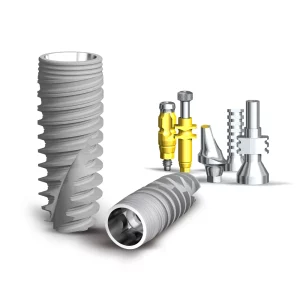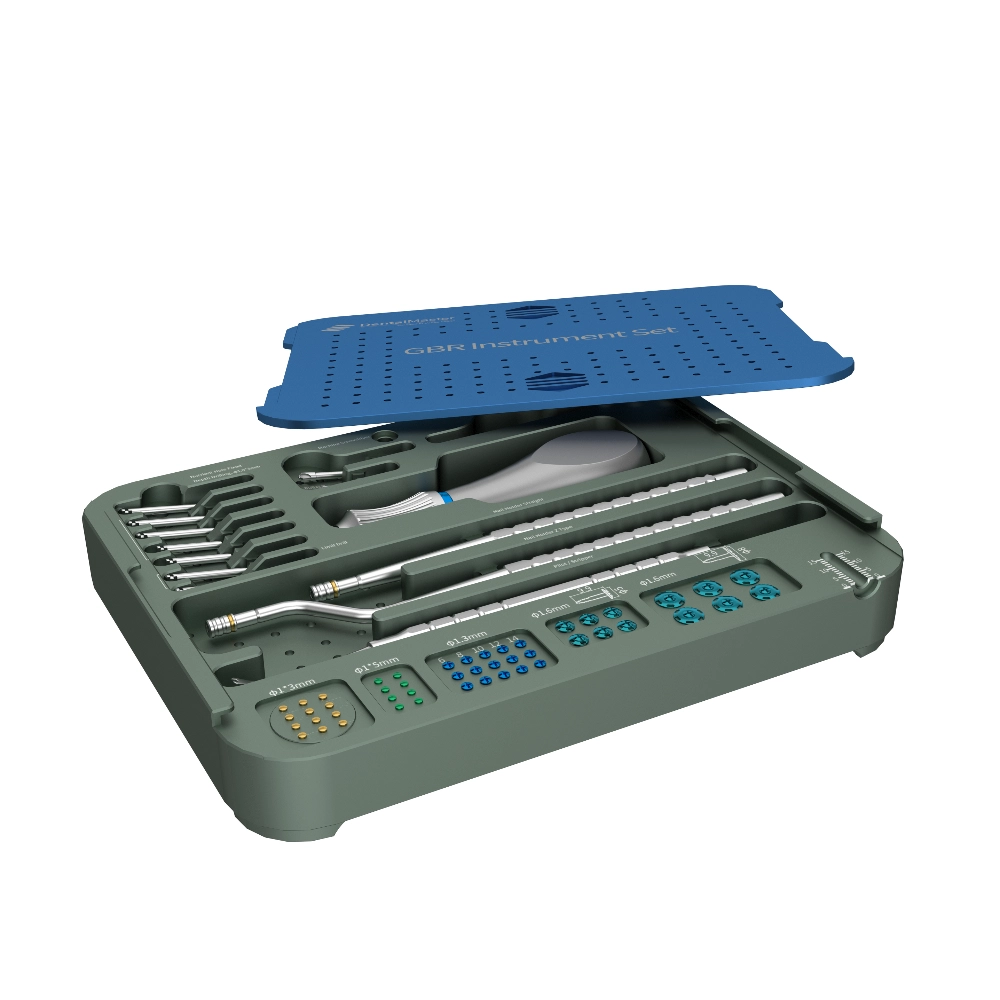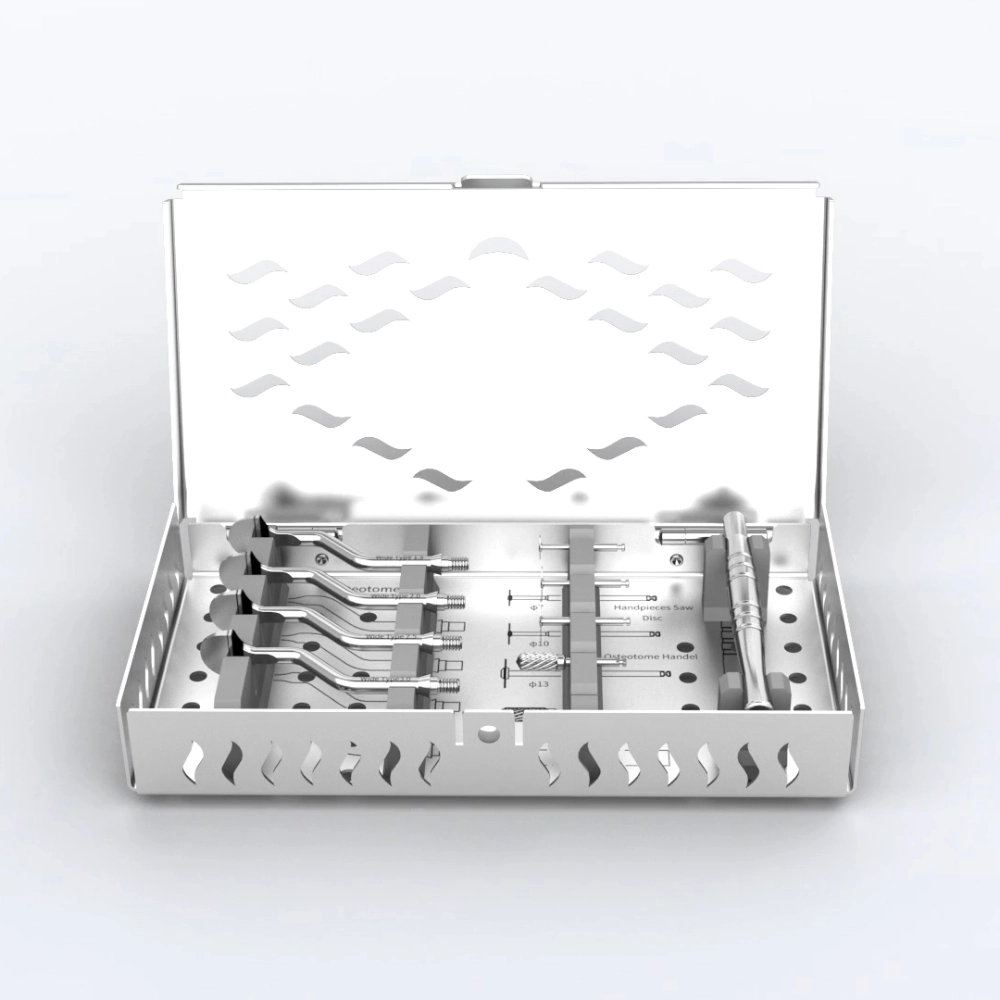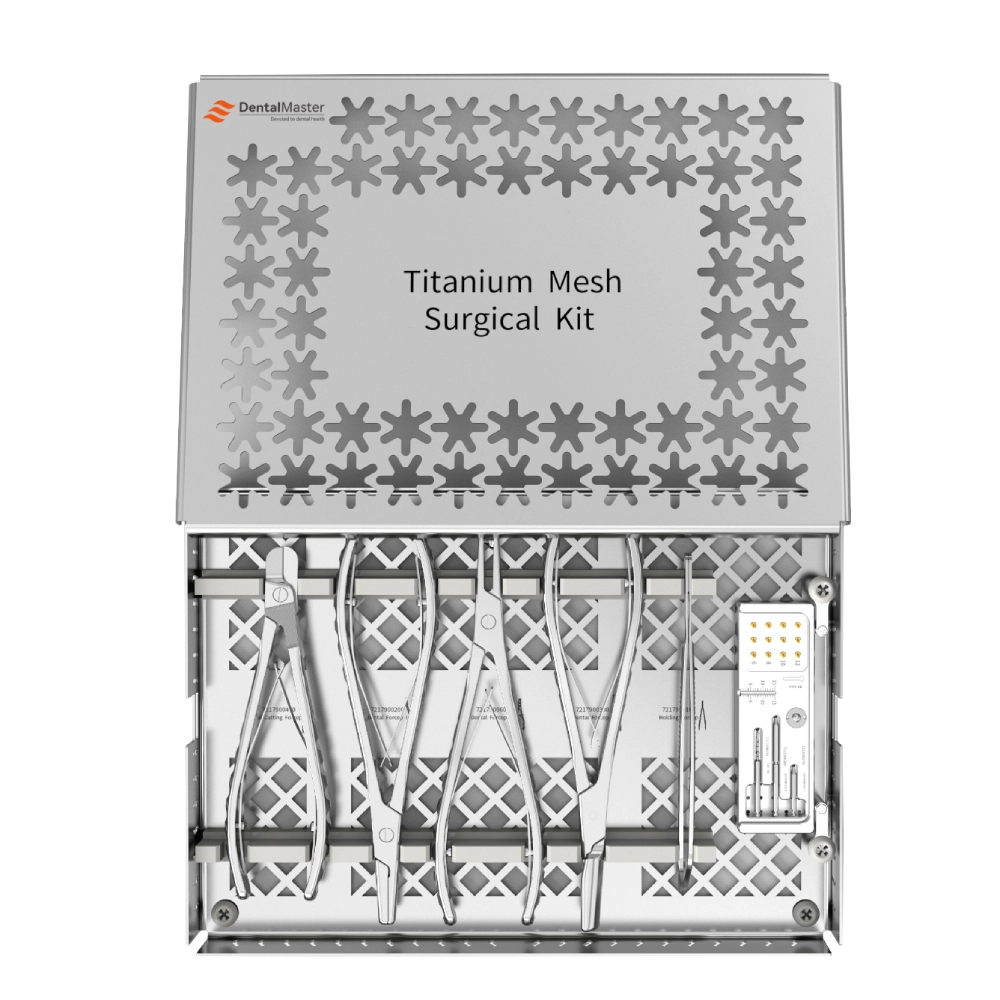Tandplak is een hardnekkige bacteriële biofilm die zich vasthecht aan het oppervlak van tanden, tussen tanden en kiezen en langs het tandvlees. Deze biofilm bestaat uit talloze bacteriën, voedseldeeltjes, speeksel en andere micro-organismen in de mond. Hoewel het met het blote oog misschien niet zichtbaar is, kan de ophoping ervan op de lange termijn een ernstige bedreiging vormen voor de mondgezondheid, en niet alleen leiden tot gaatjes en tandvleesproblemen, maar ook tot problemen zoals een slechte adem en tandvleesabcessen. In ernstige gevallen kan het zelfs de algehele gezondheid aantasten. Daarom zijn het regelmatig verwijderen van tandplak en het onderhouden van de mondhygiëne essentiële maatregelen om de mond gezond te houden en tandziekten te voorkomen. In tandheelkundige klinieken zijn professionals uitgerust met verschillende gespecialiseerde instrumenten om tandplak van patiënten efficiënt en nauwkeurig te verwijderen.

Tandplakverwijderaar
Tandplak is een hardnekkige bacteriële biofilm die zich vastzet op het oppervlak van tanden, tussen tanden en kiezen en langs de tandvleesrand. Als het niet snel wordt verwijderd, kan het leiden tot ernstige mondgezondheidsproblemen. Hier zijn enkele veelgebruikte tandheelkundige instrumenten om tandplak en tandsteen effectief te verwijderen.
1. Ultrasone scaler
Functie: Een ultrasone scaler is een tandheelkundig instrument dat geluidsgolven met een hoge frequentie gebruikt om een waternevel te genereren. Het werkt door met hoge frequenties te trillen om de plak en het tandsteen op het tandoppervlak te breken, dat vervolgens door de waternevel wordt weggespoeld. Deze reinigingsmethode is efficiënt en kan in nauwe ruimtes tussen de tanden en onder de tandvleesrand komen, waardoor moeilijk bereikbare tandplak en tandsteen effectief worden verwijderd.
Voordelen:
- Snelheid en efficiëntie: Ultrasone scalers kunnen in korte tijd grote delen van het tandoppervlak reinigen, waardoor ze ideaal zijn voor patiënten bij wie een grote hoeveelheid tandplak en tandsteen snel verwijderd moet worden.
- Minder ongemak: Vergeleken met handmatige reinigingsapparaten veroorzaken ultrasone scalers minder irritatie van het tandvlees. De waternevel die wordt geproduceerd door hoogfrequente trillingen werkt zacht in op de tanden en het tandvlees, waardoor wrijving en schade worden verminderd. Bovendien vermindert de spoelende werking van de nevel het ongemak tijdens het reinigingsproces.
2. Handmatige weeginstrumenten
Functie: Manuele scalinginstrumenten omvatten verschillende instrumenten zoals curettes en explorers, die door tandartsen worden gebruikt om tandplak en tandsteen nauwkeurig van het tandoppervlak te verwijderen. Door hun ontwerp kunnen tandartsen op moeilijke plaatsen komen, zoals tussen de tanden en langs de tandvleesrand, waardoor de mond effectief schoon en hygiënisch blijft.
Voordelen:
- Nauwkeurige controle: Tandartsen kunnen de druk en de hoeken aanpassen op basis van de specifieke anatomie van het gebit van de patiënt en de verdeling van tandplak, zodat een optimaal reinigingsresultaat wordt verkregen.
- Veelzijdige toepassing: Manuele scalers kunnen worden gebruikt voor verschillende behoeften van patiënten en verschillende delen van de mond. Of het nu gaat om voortanden, achtertanden of moeilijk bereikbare verstandskiezen, handinstrumenten zorgen voor een grondige reiniging in elke hoek.
- Minimale schade: In vergelijking met sommige elektrische reinigingsapparaten zijn handmatige scalers zachtaardiger en brengen ze minder schade toe aan de tanden en het tandvlees, wat vooral belangrijk is bij gevoelige tanden of gevoelig tandvlees.
- Eenvoudig onderhoud: Manuele instrumenten zijn eenvoudig te reinigen en te onderhouden. Tandartsen kunnen ze na elk gebruik eenvoudig steriliseren om de hygiëne en veiligheid voor toekomstige behandelingen te garanderen.
3. Luchtaangedreven scaler
Functie: Een luchtscaler is een geavanceerd tandheelkundig instrument dat gebruik maakt van luchtdruk omgezet in frequentie, in combinatie met een waterstroom, om de oppervlakken van tanden en interdentale ruimtes diep te reinigen. Het verwijdert effectief tandplak, tandsteen en tandsteen en verbetert tegelijkertijd het mondmilieu om tandziekten te voorkomen en te behandelen. Het elliptische reinigingspatroon masseert ook het tandvlees en bevordert zo de gezondheid van het tandvlees.
Voordelen:
- Niet-invasief: De werking van een luchtaangedreven scaler is relatief zacht en veroorzaakt minimale schade aan tanden en tandvlees, waardoor het geschikt is voor patiënten met verschillende gradaties van gingivitis en parodontitis. De laagfrequente trillingen en instelbare amplitude verhogen het comfort van de patiënt tijdens het reinigingsproces.
- Effectief schoonmaken: Dit instrument kan zowel tandoppervlakken als tussen de tanden diep reinigen, waardoor moeilijk bereikbare tandplak en tandsteen grondig worden verwijderd.
- Persoonlijke behandeling: Uitgerust met verschillende vormen en maten van sondes kunnen tandartsen voor elke patiënt het meest geschikte instrument kiezen, waardoor een behandeling op maat mogelijk is die de effectiviteit verhoogt.
- Ziektepreventie: Regelmatig gebruik van luchtaangedreven scalers kan de ophoping van tandplak en tandsteen effectief voorkomen, waardoor het risico op gaatjes en tandvleesaandoeningen afneemt.
4. Tandheelkundige sonde
Functie: Een dentale sonde is een fijn tandheelkundig instrument dat ontworpen is om toegang te krijgen tot nauwe ruimtes, zoals tussen tanden, langs de tandvleesrand en in de kleine inkepingen van tandoppervlakken. Het wordt voornamelijk gebruikt om de subtiele conditie van tanden en tandweefsel te onderzoeken. Door voorzichtig te tasten kunnen tandprotheses potentiële tandplak, gaatjes, tandsteen, de diepte van tandvleeszakken en gevoelige tanden detecteren, waardoor tandartsen nauwkeurige diagnostische informatie krijgen.
Voordelen:
- Vroege opsporing: Tandprotheses kunnen zeer gevoelige veranderingen op tandoppervlakken detecteren, waardoor tandartsen problemen in een vroeg stadium kunnen identificeren en aanpakken en zo verdere complicaties kunnen voorkomen.
- Nauwkeurige beoordeling: Dankzij de slanke punt kan een dentale sonde nauwkeurig de gezondheid van parodontale weefsels evalueren, inclusief het niveau van de tandvleesaanhechting, pocketdieptes en ontstekingen, wat belangrijke informatie oplevert voor gepersonaliseerde behandelplannen.
- Niet-invasief: In vergelijking met andere mogelijk invasieve onderzoeksmethoden is het gebruik van tandprotheses veiliger en pijnloos, waardoor de angst en het ongemak voor de patiënt afnemen.
5. Elektrische tandenborstel
Functie: Een elektrische tandenborstel is een modern hulpmiddel voor mondhygiëne dat gebruik maakt van een interne motor om de borstelkop rond te draaien of te laten trillen, waardoor tandplak en etensresten effectief van het tandoppervlak worden verwijderd. Hoewel elektrische tandenborstels voornamelijk worden gebruikt voor thuisverzorging, worden ze ook veel gebruikt in tandartspraktijken om patiënten te helpen een effectieve zelfreiniging te behouden, vooral na professionele reinigingen.
Voordelen:
- Effectief schoonmaken: De roterende of vibrerende borstelkop kan krappe ruimtes en tandvleesranden bereiken, waardoor moeilijk bereikbare plak effectief wordt verwijderd in vergelijking met handtandenborstels.
- Gebruiksvriendelijk: Elektrische tandenborstels zijn ontworpen met verschillende behoeften van patiënten in gedachten, met meerdere poetsstanden, antisliphandgrepen en timers, waardoor ze geschikt zijn voor verschillende gebruikers, met name voor degenen die handmatig poetsen een uitdaging vinden.
- Bevordert mondhygiëne: Langdurig gebruik van elektrische tandenborstels kan de gezondheid van de mond aanzienlijk verbeteren door de vorming van tandplak en tandsteen te verminderen, waardoor het risico op gaatjes en tandvleesaandoeningen afneemt. Ze masseren ook het tandvlees, wat een gezonde bloedcirculatie en stabiliteit van het tandvlees bevordert.
Het belang van regelmatig tandenpoetsen
Regelmatige gebitsreiniging is een onmisbaar onderdeel van een gezonde mond. Tandplak is een laag bacteriële biofilm die zich vasthecht aan het oppervlak van tanden en kiezen. Als het na verloop van tijd niet wordt verwijderd, verhardt het geleidelijk tot tandsteen, dat het tandvlees kan irriteren en kan leiden tot mondaandoeningen zoals gingivitis en parodontitis. Tandplak is bovendien een van de hoofdoorzaken van gaatjes, omdat het de harde weefsels van de tanden vernietigt, wat leidt tot tandbederf.
Daarom speelt een regelmatige gebitsreiniging een cruciale rol bij het voorkomen van mondziekten. Door middel van professionele reinigingsbehandelingen kunnen tandplak en tandsteen op het tandoppervlak effectief worden verwijderd, waardoor bacteriën minder snel groeien en het risico op mondziekten afneemt. Daarnaast bevordert poetsen de bloedcirculatie in het tandvlees, verbetert het de weerstand van het tandvlees en helpt het de gezondheid en stabiliteit van het tandvlees te behouden.
Het wordt aanbevolen om elke zes maanden naar een tandartspraktijk te gaan voor een professionele gebitsreiniging. De reden hiervoor is dat tandplak en tandsteen zich na verloop van tijd steeds verder ophopen, waardoor het moeilijk is om ze volledig te verwijderen met alleen dagelijks poetsen. Professionele reinigingsbehandelingen kunnen deze moeilijk bereikbare tandplak en tandsteen grondig verwijderen en zo de mondgezondheid sterk beschermen.
Bovendien helpen regelmatige reinigingsbehandelingen tandartsen om potentiële mondproblemen, zoals gaatjes en tandvleesaandoeningen, snel te identificeren en aan te pakken. Vroegtijdig ingrijpen en behandelen kan verergering van aandoeningen voorkomen, waardoor de complexiteit en de kosten van behandelingen afnemen.
Conclusie
Tandplak verwijderen is een essentiële stap in het gezond houden van de mond. De ophoping van tandplak leidt niet alleen tot gaatjes en gingivitis, maar kan ook de algehele mondgezondheid en kwaliteit van leven aantasten. Om tandplak effectief te verwijderen, maken tandartsen gebruik van een reeks geavanceerde hulpmiddelen en technologieën, waaronder ultrasone reinigers, pneumatische reinigers, tandprobes en elektrische tandenborstels.
Deze instrumenten hebben elk hun eigen unieke kenmerken en functies, maar ze hebben allemaal hetzelfde doel: tandplak en tandsteen efficiënt en nauwkeurig van tandoppervlakken verwijderen. Inzicht in de functies en voordelen van deze instrumenten kan patiënten helpen het tandheelkundige behandelproces beter te begrijpen en hun bewustzijn en belang van mondgezondheid te vergroten.
Het is echter niet voldoende om alleen te vertrouwen op professionele tandheelkundige behandeling. Patiënten moeten ook goede mondhygiënepraktijken ontwikkelen, zoals regelmatig tandenpoetsen, flossen en mondspoelen, en regelmatig een gebitscontrole en -reiniging plannen. Alleen door regelmatige poetsbeurten te combineren met een goede mondhygiëne kunnen we effectief tand- en tandvleesproblemen voorkomen, de mond gezond houden en de kwaliteit van leven verbeteren.
Daarom moeten we het belang inzien van het verwijderen van tandplak, actief meewerken aan tandheelkundige behandelingen en ons zelfmanagement op het gebied van mondgezondheid versterken. Alleen zo kunnen we genieten van gezonde, mooie tanden en een betere kwaliteit van leven.









